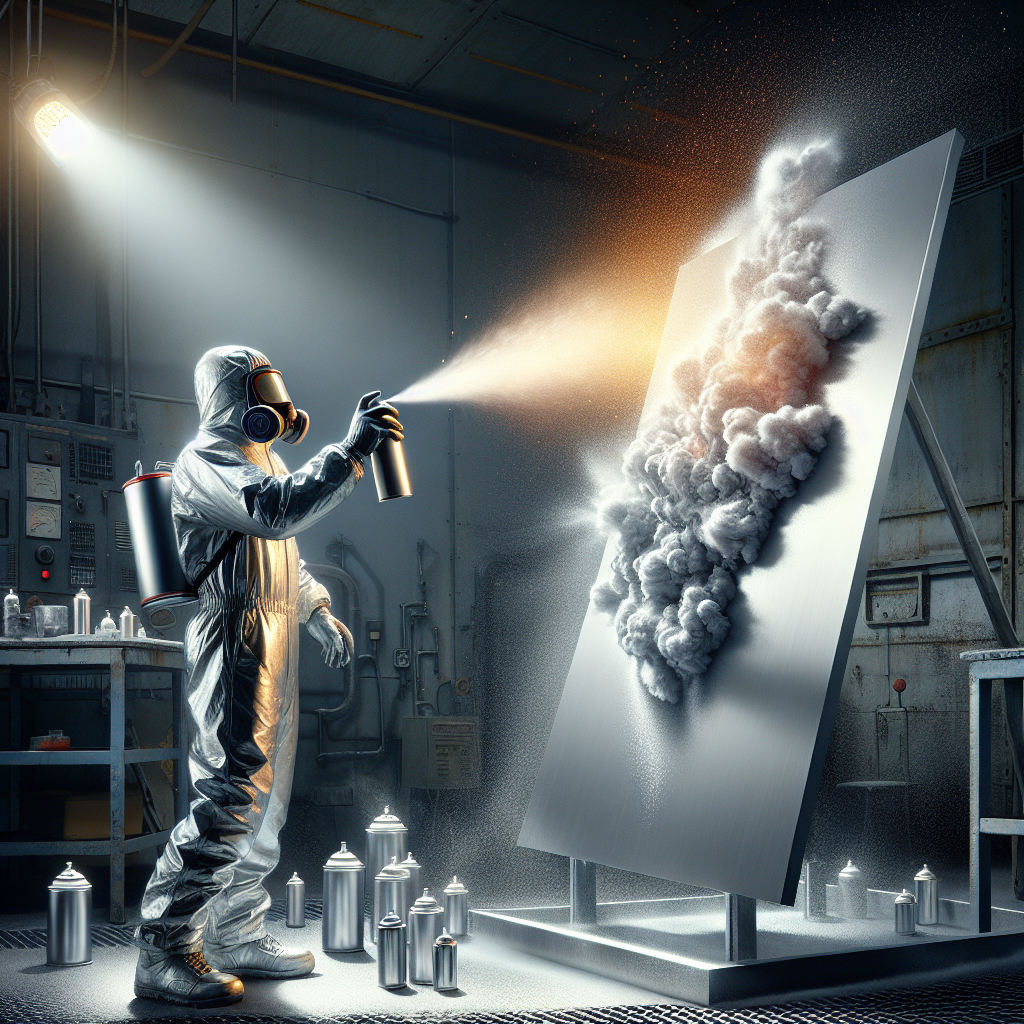Spray painting is a widely used technique for adding color and protection to various surfaces. However, when it comes to magnesium, a lightweight metal known for its strength and high flammability, you might wonder whether spray painting is a viable option. In this article, we will explore the feasibility of spray painting magnesium and delve into the considerations and precautions necessary to achieve satisfactory results. Whether you are a professional in the field or simply curious about this specific application, this article will provide you with valuable insights and guidelines to effectively spray paint magnesium.
Can You Spray Paint Magnesium
Spray painting magnesium can be a challenging task due to the unique properties of this metal. Before diving into the process of spray painting magnesium, it is essential to understand the properties of magnesium, the challenges it presents in terms of paint adhesion, and the necessary steps to prepare the surface for painting. Additionally, selecting the right paint and spray equipment, applying primer and paint effectively, ensuring proper drying and curing, and finishing and sealing the painted surface are crucial steps in achieving a successful outcome. Lastly, it is crucial to prioritize safety precautions to protect yourself and others during the spray painting process.
Properties of Magnesium
Magnesium is a lightweight and durable metal widely used in various industries. Its unique properties, such as its high reactivity and ability to form a protective oxide layer, make it a desirable material. However, when it comes to spray painting magnesium, its low adhesion for paint becomes a significant challenge. The low surface energy of magnesium limits the paint’s ability to bond with the metal, leading to adhesion problems and the potential for paint failure. Understanding these properties is essential for effectively spray painting magnesium.

This image is property of images.unsplash.com.
Challenges in Spray Painting Magnesium
Spray painting magnesium presents several challenges that need to be addressed for a successful outcome. The low surface energy of magnesium makes it difficult for paint to adhere to the metal surface. Additionally, magnesium is prone to corrosion, further complicating the adhesion process. Therefore, specialized preparation is required to overcome these challenges and ensure proper paint adhesion. Without addressing these challenges, the paint may fail to provide adequate protection or durability.
Preparation Before Spray Painting
Prior to spray painting magnesium, thorough preparation of the surface is crucial. The first step in the preparation process is to clean the surface carefully, removing any dirt, dust, or debris. Additionally, it is necessary to remove any rust or oxidation from the metal surface using appropriate methods and tools. Smoothing rough areas and sanding the surface will further improve paint adhesion. Lastly, using solvents for degreasing is essential to remove any oils or contaminants that could hinder paint adhesion.

This image is property of images.unsplash.com.
Selecting the Right Paint
Selecting the right paint for magnesium is vital to ensure optimal adhesion and durability. When considering the type of paint, factors such as the magnesium substrate, the desired finish, and the intended application should be taken into account. Different types of paint, such as acrylic, epoxy, or polyurethane, offer varying adhesion and protective properties. Evaluating paint compatibility with magnesium is critical to avoid issues such as blistering, peeling, or poor adhesion. Investing in high-quality paint will ultimately contribute to a successful spray painting job.
Choosing the Correct Spray Equipment
Having the correct spray equipment is essential for achieving a professional finish when spray painting magnesium. There are different spray gun types available, such as HVLP (High Volume Low Pressure) or airless spray guns. Determining the appropriate nozzle size and pressure is crucial for achieving the desired paint coverage and finish. Properly adjusting equipment settings, including paint flow, fan pattern, and air pressure, is necessary for a smooth painting process. Taking protective measures against overspray is important to prevent damage to the surroundings and ensure a safe working environment.

This image is property of images.unsplash.com.
Applying Primer
Applying primer to the magnesium surface is an important step to enhance paint adhesion and protect the metal. Primers specially formulated for magnesium should be used to ensure compatibility and maximum adhesion. The primer can be applied using various techniques, such as spraying, brushing, or rolling, depending on the desired finish and the size of the surface being painted. Allowing sufficient drying time between primer coats is crucial to achieve a smooth and durable base for the paint.
Applying Paint
Once the primer has adequately dried, it is time to apply the paint. When spray painting magnesium, using proper spraying techniques is essential to achieve an even and consistent coating. Applying thin, multiple coats of paint is preferable over a single heavy coat to prevent runs or drips. Maintaining a consistent distance and pressure while spraying will ensure a uniform finish. Taking extra care to avoid overspray and achieve complete coverage will contribute to a professional-looking result.

Drying and Curing
After applying the paint, proper drying and curing are crucial for the paint to achieve its full protective properties. The two main methods for drying paint on magnesium are air drying and oven curing. Air drying allows the paint to dry naturally, while oven curing accelerates the drying process through controlled heat. Optimal drying conditions, such as temperature and humidity levels, should be maintained for the paint to dry completely. Ensuring sufficient curing time before subjecting the painted magnesium to regular use or exposure to elements is important to ensure maximum durability and longevity. In some cases, considering heat treatments can further enhance the paint’s adhesion and protective properties.
Finishing and Sealing
Once the paint has dried and cured, finishing and sealing the painted surface can provide additional protection and enhance the overall appearance. Depending on the desired finish and level of gloss, a clear topcoat or sealant can be applied to the painted magnesium surface. This will help protect the paint from scratches, UV radiation, and other environmental factors that may degrade its appearance and performance.

Safety Precautions
When spray painting magnesium, safety should be a top priority. Working in a well-ventilated area is essential to prevent the inhalation of paint fumes or other airborne contaminants. Personal protective equipment, such as gloves, goggles, and respiratory masks, should be worn to protect against potential skin contact, eye irritation, and inhalation hazards. Proper storage and disposal of paints and related materials should be observed to minimize environmental impact and ensure safety.
In conclusion, spraying painting magnesium can be a challenging task due to the metal’s unique properties and low adhesion for paint. To achieve a successful outcome, proper surface preparation, selection of the right paint, and use of appropriate spray equipment are essential. Applying primer and paint with precision, allowing adequate drying and curing time, and considering finishing and sealing options will contribute to a durable and attractive painted magnesium surface. Lastly, prioritizing safety precautions will ensure the well-being of individuals involved in the spray painting process. By following these guidelines and taking necessary precautions, you can successfully spray paint magnesium and achieve professional results.



